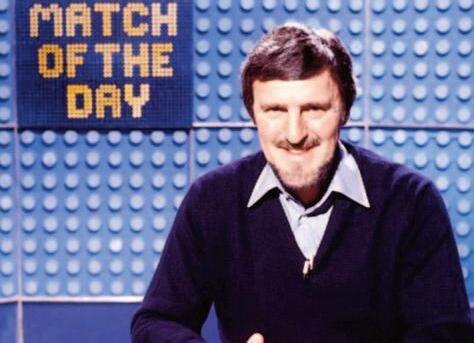
13 minute read
THIS SPORTING LIFE:FOOTBALL OR SOCCER? A Yorkshireman in America
CHARLIE STARKEY (1968 - 1975)
Things often look different when viewed from afar.We invite our man in the US to give us his personal perspective on some of the topics and issues of the day.
Advertisement
IN the interests of full disclosure, I am probably the least qualified person to write a piece about sports. Not American, not British, nor any blasted country’s. I’ve made my share of sports graphics for TV shows and documentaries, even designing a cartoon character named ’Kid Kegler’ for a teen bowling show, but my sporting CV is otherwise woefully lacking. (Does watching Ted Lasso qualify?)’
‘In my day’ we boys were taught that the purpose of sports was to promote healthy competitiveness, teamwork, discipline, and sportsmanship. On the contrary, what played out in the gym and on the playing field frequently resembled scenes from Lord of the Flies. Physical Education lessons provided a socially acceptable outlet for unfocused adolescent hormone-fuelled energy, including an opportunity to sort out various unresolved classroom rivalries. As for faculty members, the canny scheduling of postlunch double games periods – especially those all-weather cross country runs to Castle Hill and back – ensured our Form Masters a long relaxing coffee break in the carcinogenic atmosphere of the Teachers’ Lounge.
It’s been four thousand years since I last slouched down St Helen’s Gate, canvas duffel bag slung nonchalantly over one shoulder, apprehensively anticipating yet another daunting PE period. Destined never to represent Siddon House in anything resembling a sporting endeavour, being a dreaded ‘last pick’ for team games was serially demoralising, souring me on participating in sports for the rest of my school days and beyond.Young lads could be cruel, and so could gym teachers. Not every student is built to hurl a shot put with ease or spring effortlessly over a rickety vaulting horse, but I was also a cack-handed catcher. At least I performed well in the hundred-yard dash, a proficiency which also came in handy whenever the good-natured secondary modern lads on my council estate stopped to admire my natty grammar school attire. The most egregious crime of all, however, was having zero footy skills.
Somewhere between the bottom of the Bunk and nearby Arkenley Lane lurked King James’s very own Grimpen Mire*, otherwise known as the ‘third team pitch’ where We Who Were Rubbish at Football were obligated to half- heartedly kick around a ball once a week. Frank Worthington would not have been impressed. Needless to say, none of us made the gargantuan leap to Leeds Road stardom. Years later this boggy morass was eventually reclaimed for track and field use and its notorious past finally put to rest.
I can’t claim to be a connoisseur of The Beautiful Game, but as a music fan I do understand the comparable joy and camaraderie of fans singing and shouting and sometimes crying together en masse. It’s a kind of emotional purge or catharsis for those who can’t imagine themselves lying on a therapist’s couch. I’d occasionally watch Match of the Day when my home team was featured, which wasn’t often, except during Town’s brief 1970-72 sojourn into the First Division. An unpleasant consequence of being thus elevated was the frequent visitation by hordes of overly enthusiastic supporters from rival top teams. Riding the rails in those infamous ’70s Football Specials, they’d descend upon our town centre to cause havoc and to generously donate their Doc Martens laces to the local constabulary. Not content with mere fan taunting and pitch invasions, notorious hooligan firms later grew ever more violent, planning skirmishes with impressive military precision both at home and abroad – sometimes with deadly consequences. Unlike Europeans, American sports fans tend not to export their violent rivalries overseas. They leave that to their nation’s professional armed forces.
Which noun is considered correct, football or soccer? Britannica defines soccer as an abbreviation of the term ‘assoccer’ or Association Football, although that name seems to have fallen out of favour in Britain while in America the opposite is true. The game’s popularity across the Atlantic has slowly gained traction in high schools since the 1980s, especially after the successes of the US Women’s National Team, and is likely to ramp up again when America, Canada and Mexico jointly host the 2026 World Cup. (The United States hosted the Men’s World Cup in 1994 and the Women’s in 1999.)
American Football
‘Football’ in name only, America’s namesake national sport also features eleven players a side, but that’s where any similarity to the UK game begins and ends.
Originally known as ‘gridiron’, it’s closer to rugby than soccer but with more teeth. The game is played with an oval (or ‘prolate spheroid’) laced-up leather projectile resembling rugger’s own ‘quanco’, everyday terms with which even casual fans are surely familiar.
Football’s steroidal gladiators are built like tanks with shoulder pads more prominent than those of '80s soap actresses, have biceps wider than my thighs, and wear crash helmets for protection. Instead of two halves, the game is split into four quarters that can last forever so players take a commercial break whenever someone drops the ball, which occurs about every three yards or seven seconds. This helpful diagram explains how a simple play stratagem works: in these here United States is the Super Bowl, involving the winningest (sic) teams in American football. (Super Bowl: sounds like a brand of toilet cleaner, doesn't it?) Across the country fans throw daylong parties and wash down bucketloads of KFC™ chicken wings with six-packs of Coors™ and Bud Light™. The mostest winningest team will then be feted with a big parade back home, their mayor declaring a citywide hangover holiday.
Its popularity outside of the US has prompted the creation of an International Federation of American Football and several UK leagues, culminating in the British American Football Association’s own Britbowl championship. Heck, I only recently discovered my hometown university fielded a team named the Huddersfield Hawks, although I believe it’s currently on an extended hiatus.
Super Bowl
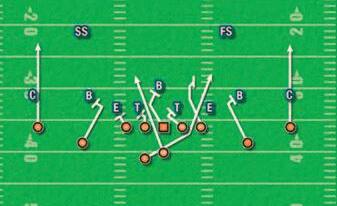
The biggest annual televised sports event
The 32 teams of the National Football League (NFL) are divided into the American Football Conference (AFC) and the National Football Conference (NFC). The top teams of each conference battle through a gruelling series of playoffs to compete in the Super Bowl, a prestigious event which first took place in 1967. This February the Philadelphia Eagles and the Kansas City Chiefs faced off in Super Bowl LVII. American fans like getting their money's worth and, for many, higher-scoring games deliver more nail-biting excitement than European soccer’s mere handful of goals per game. In US football a touchdown can occur across the entire 160-foot width of the ten-yard end zone. By comparison, one might argue that it takes more skill for a soccer player to shoot/head/dribble a ball into a 24-foot wide goalmouth defended by one intrepid keeper.
I must admit I didn’t actually watch the big game but I did make a point of catching Puppy Bowl XIX. For the uninitiated, Puppy Bowl is a pet-foods-sponsored pre-game special featuring adoptable puppies cavorting around a miniature football field. In a contest of high drama Team Ruff came back from a huge deficit to tie the game in the fourth quarter but Team Fluff clinched an 87-83 chew-toy vic tory in overtime. The rules, such as they are, are sort of arbitrary, but it’s great fun to watch and compared to their human counterparts significant ly fewer canine competitors end up in traction.
The homosapien Super Bowl Sun day halftime show has grown into a TV mega-event all itself, affording an opportunity for the featured performers to sell a shedload of iTunes downloads and concert tickets. 2004’s notable musical interlude spiked viewers’ attention when Justin Timberlake ‘accidentally’ initiated fellow singer Janet Jackson’s famous chesticular wardrobe malfunction, resulting in MTV being barred from producing further halftime concerts. This year, resplendent in a bright red boiler suit and baby bump, the main attraction was Rihanna. With fourteen Billboard number ones and nine Grammys to her name, she led the obligatory troupe of synchronised dancers through fifteen minutes of her greatest hits. Puppy Bowl (sponsored by Subaru™ motor vehicles and Bissell™ carpet cleaners) offered up an even cuter Kitty Halftime Show (courtesy of Arm and Hammer™ cat litter) highlighting the exemplary achievements of animal res- cue and adoption agencies. Eye-watering amounts of cash were shelled out by advertisers during the game, some blowing $7 million or more to air a single thirtysecond commercial. The big budgets attracted big movie stars: Ben Affleck, Matt Damon, Adam Driver, Sylvester Stallone, Will Ferrell, Kevin Bacon, John Travolta, and Bryan Cranston and Aaron Paul – reprising their Breaking Bad roles –were hired to hawk snack foods, beer, trainers, cars, and a myriad of other consumer products.
More fun: ‘Puppy Bowl’ features rescue dogs cavorting around a miniature football field.
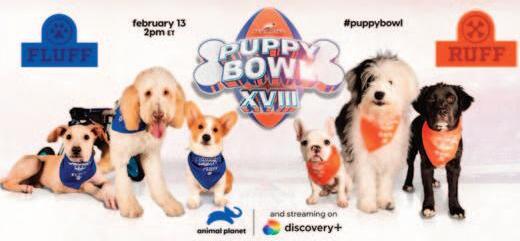
Sports that aren’t football
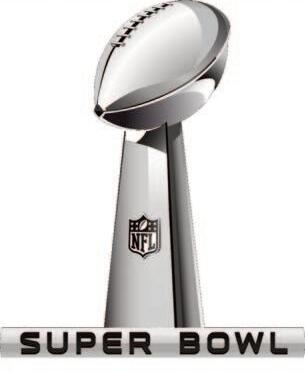
Saturday afternoon TV in Britain was once dominated by the BBC’s Grandstand and ITV’s World of Sport. I doubt if today’s TikTokkers could even begin to imagine the nail-biting excitement of watching a billiards tournament broadcast in monochrome over 405 interlaced scanlines, only marginally less enthralling than listening to it on the radio.
As an armchair non-sportsman raised in a car-free household, I uncharacteristically developed an abiding interest in watching motorsports, including mo- tocross or ’scrambling’, the Isle of Man TT races, and Formula 1. (One Christmas I even asked for a Monaco Grand Prix board game: roll a six and roar past Jim Clark and Graham Hill at the Casino turn!) TV cameras even documented the tweedy weekend pastime known variously as ’trialling’ or ’hillclimbing’ where deerstalkered Sebastians and Tarquins would attempt to propel vintage English roadsters up steep slippery hillsides. This typically British pursuit required a passenger to vigorously bounce up and down to encourage the vehicle’s forward momentum in navigating the rutted, muddy slopes.
Towards the end of BBC’s Grandstand a clattering teletype machine would announce the afternoon’s football results in real time while presenter Frank Bough earned his keep by reading them aloud. At home in front of the goggle box, Biros at the ready, tens of thousands of hopefuls marked off their Littlewoods and Vernons football pools, only to have their jackpot dreams cruelly dashed. Concluding that neither logic nor the invocation of a deity could improve his chances, my dad occasionally handed me his pools forms with a resigned “Here, you have a go, son”. To my knowledge, neither of us won so much as a penny. Football pools were more or less consigned to history after the National Lottery was established in 1994
Although technically illegal, sports betting was endemic in the United States, particularly at horseracing and professional baseball events where the malign presence of organised crime syndicates grew to influence or ’fix’ the outcomes. Eventually it occurred to the government that “if we legalise gambling we can tax it like we do everything else.” This began, no surprise, in Las Vegas, Nevada in 1949, and currently 30 out of 50 states allow sports betting, a business generating over seven billion dollars in annual revenue.
Blighty businesses have historically backed home football teams, advertising their wares in match programmes and on billboards, and after a 1977 decision by the Football Association shirt sponsorship was approved for team kits, procuring additional revenue for cash-strapped teams by slapping logos all over their uniforms. (What’s next, tattoos?) How times have changed. Stadiums themselves are named after corporations, and international investment companies and billionaire tycoons hold stakes in half of all Premier League clubs. By comparison Huddersfield Town’s major shareholder was, until recently, a Yorkshire greetings card magnate (Dean Hoyle). This spring Town became the latest English club to be owned by an American consortium. It remains to be seen if this development will have a positive im- pact on their troubled run this season. Society has a habit of granting celebrities almost heroic status. With the media giving their opinions disproportionate gravitas, should athletes be encouraged to express political opinions or just shut up and play? The issue of politics in sport is nothing new, going all the way back to the 1936 Olympics. During the 1968 Mexico Games two American medalists courted controversy by raising their fists on the awards podium in support of the burgeoning Black Power Movement. Unforgettably, the never-ending Israeli-Palestinian conflict spawned a horrific terrorist attack at the 1972 Munich Olympics. America boycotted the 1980 Moscow Olympics in response to the Soviets’ invasion of Afghanistan, which led to the Eastern Bloc boycotting the 1984 Los Angeles Games. In this century (crikey, I’m old!) US footballers took the knee during the playing of their national anthem in response to the death of George Floyd, a black American suffocated by a white policeman who knelt on his neck during an arrest. Basketball players wore shirts with the quote "I can’t breathe" after Eric Garner was asphyxiated by officers in New York. Many European sportspersons followed suit in solidarity.
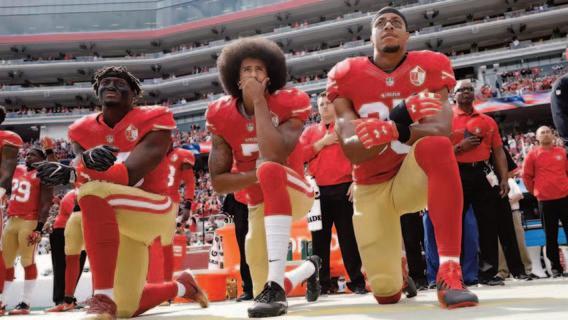
A contentious debate sprang up in March when the BBC suspended presenter Gary Lineker for posting a controversial tweet on social media, comparing the Tory government’s policy towards seafaring asylum seekers to that of Nazi Germany. I doubt migrants arriving in small boats have succeeded in overwhelming the NHS or caused the British economy to falter –politicians appear to have done a fine job of that already. Still, as a Yorkshire expat living three thousand miles away in a nation built by immigrants, perhaps I should keep mum on the subject, especially as the state of Texas is experiencing a crisis of its own at the Mexican border.
Baseball
Which other sport is as big in the US? Second only to football in America is baseball. Baseball is essentially rounders played with a bigger bat. As with football, helmets are necessary because professional pitchers are capable of throwing the ball at over 100 mph. There are three basketball leagues: the professional National Basketball Association, the women’s WNBA, and the National Collegiate jors’. The great Jackie Robinson broke the colour bar when he became the first black MLB player, signing with the Brooklyn Dodgers in 1947.
Athletic Association. ‘March Madness’ is the season when college teams compete to win the NCAA Championship: televised games rake in millions, and the non-professional players can benefit from endorsement deals that use their name, image, and likeness (known as ‘NIL’).
At the end of a regular season the top Major League Baseball (MLB) and National League (NL) teams battle it out for the World Series trophy. Although only US teams take part they actually have the nerve to label it the ‘World Series’. Go figure, as they say.
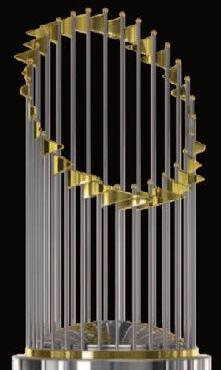
Having produced charismatic players such as Babe Ruth, Lou Gehrig, and Jackie Robinson, baseball has frequently inspired Hollywood biopics and even musicals (Damn Yankees and Take Me Out to the Ball Game). Big stars took the lead in The Pride of the Yankees (Gary Cooper), Field of Dreams and Bull Durham (both Kevin Costner), The Natural (Robert Redford), and 42 (the late Chadwick Boseman). 1992’s hit A League of Their Own told the fictionalised sto ry of the All-American Girls Professional Baseball League. (Even casting Madonna could n’t screw that one up.)
A bit of trivia: there’s an eccentric regional variation of the game played in Savannah, Georgia, called Banana Ball. Games are limited to two-hours and can include a batter on stilts and the wearing of kilts. Savannah Banana games are sellouts and regularly pull in millions of views on social media.
Health concerns
Sports are a big deal in US schools and colleges, taking up a significant portion of their budgets. It can seem like academic achievement takes second place, yet for many underprivileged students athletic scholarships offer otherwise impossible opportunities for advancement. There can be a downside, however. To compete against stronger opponents, kids often feel pressured to take performance-enhancing drugs to increase muscle mass and endurance. Many of their professional role models do, so where’s the harm? Unfortunately, the abuse of anabolic steroids by both teenagers and adults has been proven to cause a multitude of long-term health problems.
This being the United States of America, it should come as no surprise that ‘colored’ Americans were initially forced to form their own baseball leagues. The negro leagues, as they were known, became very successful but after World War II their popularity declined after the top players were gradually integrated into the ’ma- The World Series Trophy
Football is described as a ‘full contact sport’ for good reason, along with rugby, ice hockey, and of course Quidditch™ except that most injuries can’t be cured with a magical healing spell. It’s not only boxers who suffer job-related blows to the head. Internationally re - spected neurosurgeon Henry Marsh has been quoted as saying “There’s convincing evidence that even minor head injuries cumulatively cause damage,” with repetitive concussions clinically linked to personality disorders, depression, and earlyonset dementia. Taking safety precautions is literally a no-brainer.
As if that wasn’t sufficiently disconcerting, the premature deaths of six Philadelphia Phillies baseball players have been linked to toxic PFAS chemicals found in their stadium’s Monsanto Astroturf™ after each fell victim to glioblastoma, a rare brain cancer. Monsanto promoted their synthetic grass surface as being cheaper to maintain than nature’s own but it’s rougher to play on, causes more injuries, and is made from ‘crumb rubber’, aka. recycled tyres, which contains volatile organic compounds. In addition, a report from the University of Washington State cited an unusually high incidence of cancers among the women’s soccer team who played on the same kind of artificial turf. NFL players and US soc- cer teams are now pushing to ban its use.
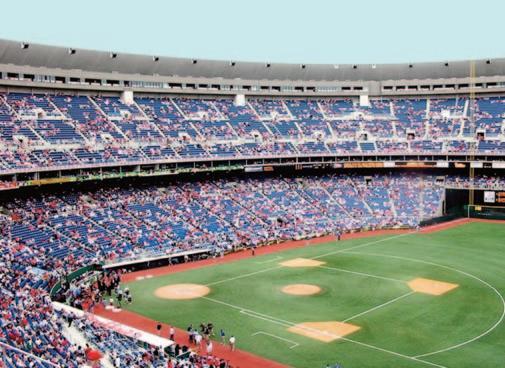
It’s a Knockout?
Successful athletes are viewed as role models for youth, yet they’re frequently given a pass when they break the rules. That sends a dubious message to society that under certain conditions ungentlemanly behaviour is to be tolerated. But lest we forget, we’re only human and aggression is encoded in our DNA. We live in a violent world and some sports merely reflect that. With international tensions spiking in the shadow of Russia’s ‘special military thing’ in Ukraine and SinoAmerican rivalry over Taiwanese independence, we should consider rebooting the old It’s a Knockout game show. Superpowers would sort out their problems armed with custard pies and water balloons instead of reducing each other’s countries to rubble. If not Knockout, then how about a cricket tournament instead, the game of gentlemen? I’d be all for it, watching with tea and scones from the comfort of my armchair.
l The Kansas City Chiefs were the Super Bowl LVII victors. In that momentous day’s other news: dessert lovers celebrated National Plum Pudding Day, the late Charles Darwin celebrated his 214th birthday, and the world kept on spinning.










